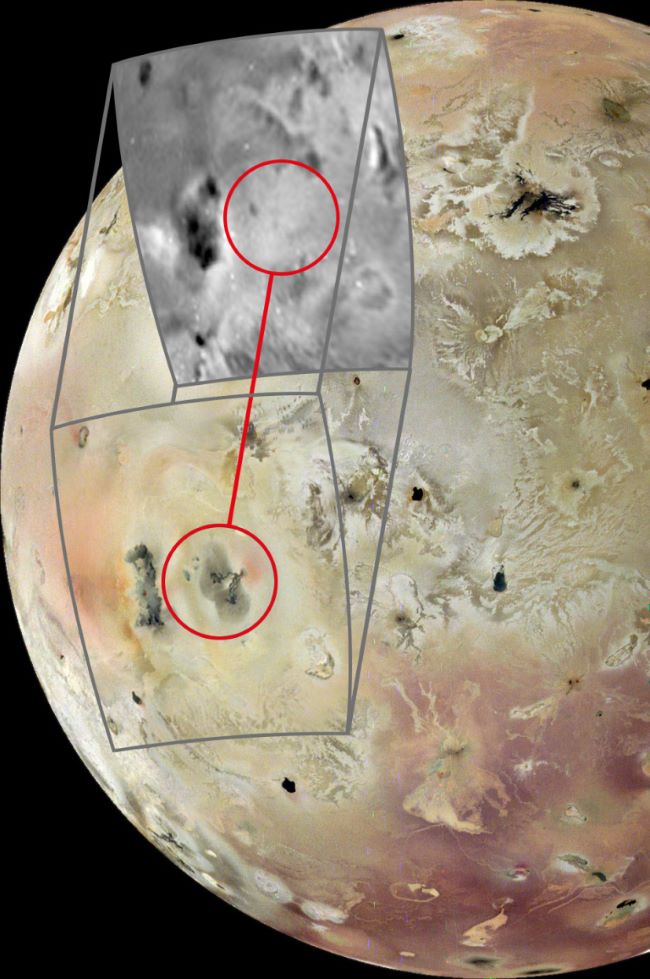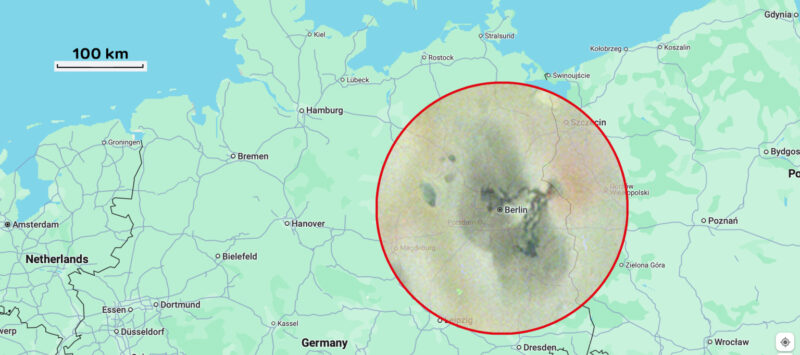
Io has a new volcano
Io, the closest large moon to Jupiter, has a hot interior thanks to the tidal forces of the giant planet on one side and large moons on the other. In fact, these forces cause fountains of lava to erupt on Io’s surface. It’s the most geologically active place in our solar system. On September 11, 2024, scientists at the Europlanet Science Congress in Berlin said they’ve spotted a new volcano on Io. The volcano is absent in previous images from the Galileo spacecraft in 1997, but it appears in Juno spacecraft imagery from February 2024.

An ever-changing surface
The new volcano covers an area about 110 miles by 110 miles (180 km by 180 km) wide. The scientists have superimposed an image of it over a map of Europe (see below), centered on Berlin where the conference was, for comparison. Not surprisingly, the volcano is not the only change on Io’s surface since Galileo imaged the satellite back in the 1990s. Michael Ravine of Malin Space Science Systems, responsible for the JunoCam on the Juno spacecraft, said:
Our recent JunoCam images show many changes on Io, including this large, complicated volcanic feature that appears to have formed from nothing since 1997.
Juno has made three recent flybys of the volcanic moon in the last two years. From those flybys, the JunoCam captured some 20 closeup color images of the moon’s surface. It saw:
… a total of nine plumes associated with active volcanic features on the moon, as well as other changes, such as new lava flows and other surface deposits.

More on the new volcano
The volcano – still unnamed – lies just south of Io’s equator. And the new volcano is east of another volcano named Kanehekili. On the side of the new volcano closest to Kanehekili, we can see two dark streams of lava. Each of those streams flows for about 60 miles (100 km). At the end of the streams, where the lava has pooled, you can see overlapping gray deposits. In this area, the hot lava has vaporized frozen material on Io’s surface.
On the eastern side of the volcano, we can see a red stain. The red color comes from sulfur. The volcano vents sulfur, which then falls back to the surface.

Bottom line: Jupiter’s moon Io has a new volcano! The volcano appears in Juno spacecraft images from February 2024. Streams of lava and sulfur stains mark its flanks.
Source: Results from recent close-up imaging of Io by JunoCam (perijoves 57, 58 and 60)











